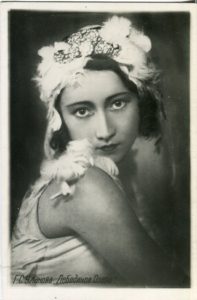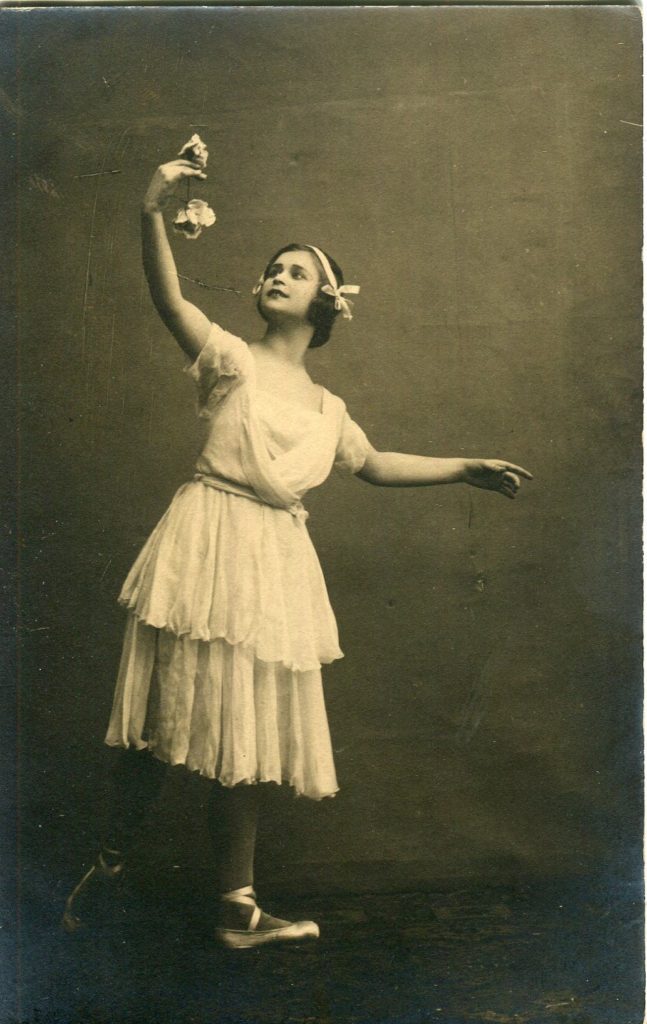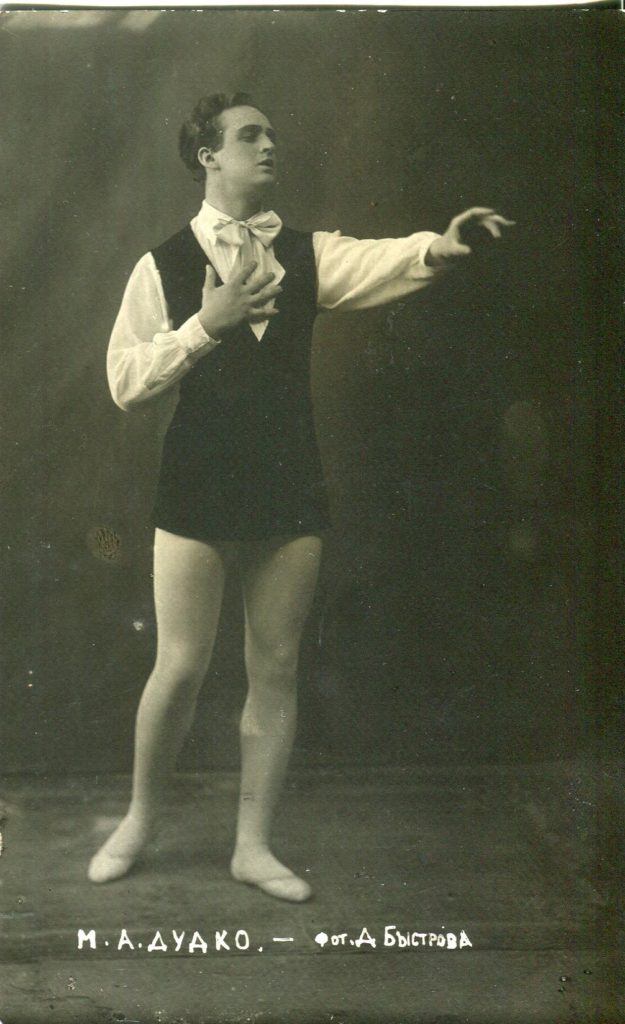Our Ballet: Soviet style - Vancouver Ballet Society
- Home
- Features 2020 - 2023
- Our Ballet: Soviet style

By Robert Greskovic
Part three in our series featuring the personal photo card collection of our New York correspondent
After the October Revolution of 1917, the imperial ballet world’s schools and theatres were renamed by the new Bolshevik government as state theatres and state academies. Once ballet troupes began to come out of Soviet Russia to tour the West, some ex-patriate Russians, who had had careers in the imperial era, were quick to correct anyone who referred to these groups as exponents of “Russian” ballet; the aesthetic in their eyes was clearly “Soviet.” Below are cards featuring three artists working in the Soviet era of ballet in the USSR.

Galina Sergeyevna Ulanova is depicted in these two cards early in her long and much lauded career, which began with her graduation in 1928 from the Leningrad State Academy. There she trained under Maria Romanova (her mother) and the famed pedagogue Agrippina Vaganova.
From 1928 to 1944, Ulanova danced in the Kirov Ballet in Leningrad, as St. Petersburg was called at the time. Then, until 1960, she danced with the Bolshoi Ballet in Moscow. As its stellar ballerina, Ulanova headlined in the landmark Bolshoi tours to Western Europe and North America in the late 1950s.

The full-figure photo, circa 1927, shows the graduating student dancer costumed in a 1920s fashion chemise for a school performance of Satyr’s Grotto. The one-act ballet was a showcase to Grieg choreographed by Alexander Shiryaev, with star pupil Ulanova in the role of a nymph. The makeshift look to the photo’s setting suggests something of the hardscrabble times that pertained as the once-imperial ballet tried to uphold its artistic standards as much as possible in an era fraught with upheaval and uncertainty.
In the later portrait card, circa 1933, Ulanova is shown in the role of “Swan,” which is how Vaganova designated the character of Odette in her somewhat non-traditional staging of Swan Lake. Vaganova’s Odile, depicted as the daughter of a ruined landlord, was performed by a different dancer.
Ulanova, who was born in 1910, died in 1998, by which time her fame was worldwide. To many, her name was synonymous with the Bolshoi Ballet, with Juliet and Giselle among her signature roles.
Marina Timofeyevna Semyonova (1908-2010) was another early student of Vaganova. Semyonova is shown in this 1925 uncaptioned photo card as Naila, fairy of the spring, the title role in Ruchei (Russian for stream), a ballet known in the West as La Source.
The ballet, to Léo Délibes’ 1866 music, was originally staged by Arthur Saint-Léon, but was presented at this time in a version adapted by Achille Coppini in 1902. The occasion was the budding ballerina’s graduation performance in a role that her teacher had danced in 1916 at a benefit performance held to honour Vaganova.
Semyonova is costumed in what the Russians call a chemise, as opposed to wearing a more classically cut tutu, suggesting a modern freer look for the ballerina in this work.

Later in 1925, Semyonova joined the ballet troupe connected to Leningrad’s State Theatre, transferring in 1930 to the Bolshoi Ballet in Moscow. There she made a notable name for herself as a grand ballerina, and ultimately as a teacher and coach to such famous names as Maya Plisetskaya, Nina Timofeyeva and Nadezhda Pavlova.
Mikhail Andreyevich Dudko is poetically posed and costumed here for the lone male role in Chopiniana, choreographed by Michel Fokine (originally Mikhail Fokin) in 1908. Soviet ballet dubbed the role Youth, though Fokine had left it unnamed. In 1909, impresario Serge Diaghilev had the choreographer retitle the ballet Les Sylphides for its presentations with Les Ballets Russes in Paris, the title by which it is known in the West today.

This card, from the studio of Bystrov, has been dated by Russian sources as 1925, which tells us that the Leningrad staging of Chopiniana remained credited to Fokine even though the choreographer was somewhat discredited by the Bolsheviks after he left Russia permanently in 1918.
The version familiar nowadays from troupes descended from the one Dudko danced in is a revision by Vaganova, which she first staged in 1938. It has remained the staging performed by Soviet and now post-Soviet companies ever since, and the one they toured to the West, where stagings directly associated with Fokine from his years outside Russian have prevailed.
Dudko, who was born in 1902, graduated in 1920 as part of a class of five men from the state academic theatre school (formerly the imperial theatre school) in Petrograd (as St. Petersburg was known at the time, becoming Leningrad in 1924).
Soon after World War Two, Dudko, the once prominent danseur noble, was discredited and wrongly accused of being disloyal to the USSR for collaborating with the Germans; he was sent to a labour camp. When released, he was relocated far away from his former home, Leningrad. Soviet reference books downplayed Dudko’s one-time talent as a “first dancer,” and, when he was finally able to return to Leningrad, he did not re-enter the profession of ballet. He died in 1981.

